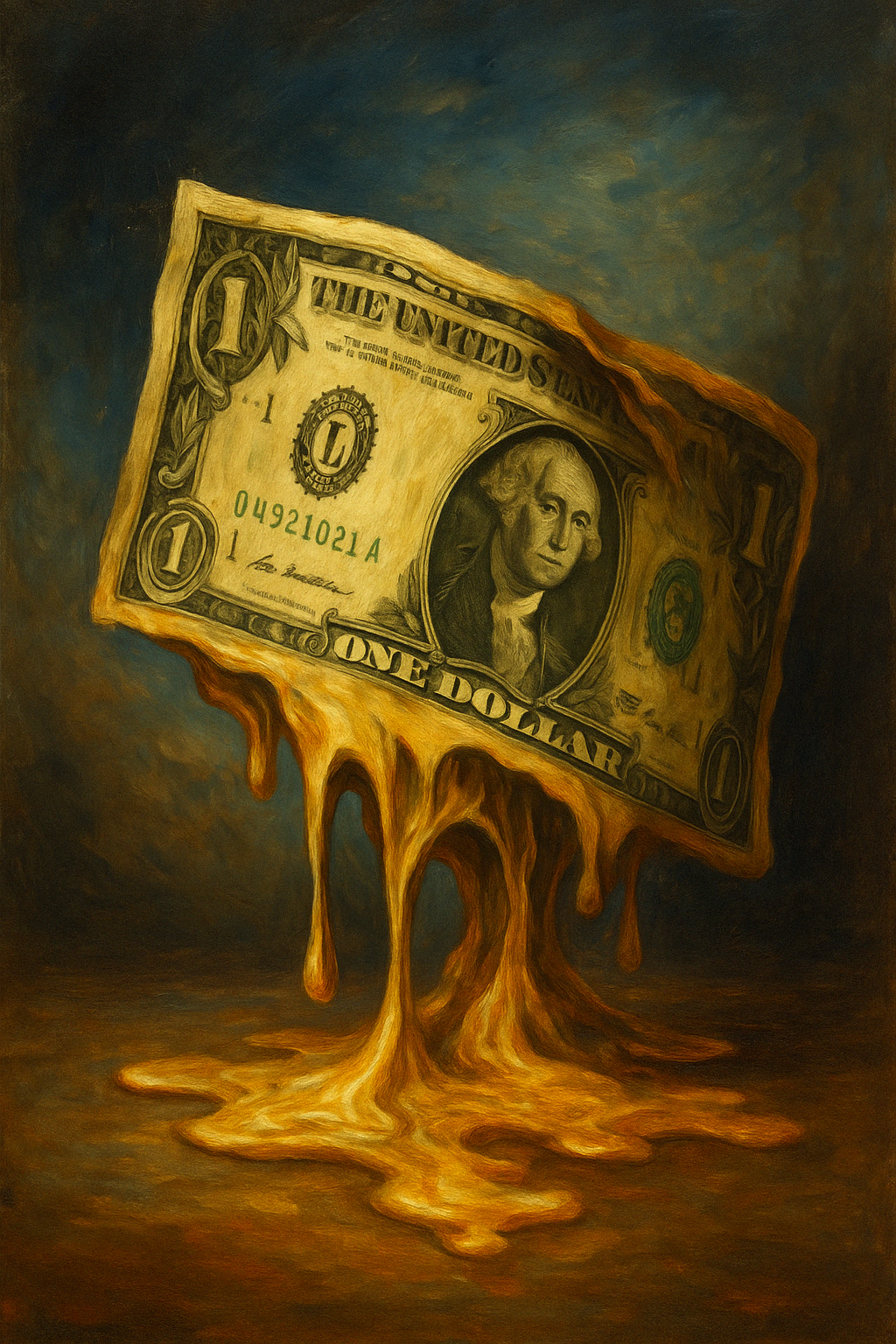The Market Always Knows. But What If It Knows a Con?
By Barrett Rains
Staff Correspondent, BatShitCrazy.com
April 18, 2025
Wall Street traders, advisors, and portfolio managers used to pretend they cared about fundamentals — jobs, inflation, interest rates, volatility, bond yields. And maybe they did. But they didn’t have to worry about whether the president was actively spitting into the gearbox of global finance.
That illusion is over. The new game is chaos.
Earlier this week, the Consumer Financial Protection Bureau — the agency created to stop banks from pickpocketing you in broad daylight — quietly laid off over 200 staffers. No press conference. No national hand-wringing. Just the soft click of deregulation by deletion. Trump’s White House didn’t issue a statement — it didn’t have to. The layoffs were the statement.
The markets surged. The dollar hiccupped. And somewhere, a hedge fund manager lit a cigar with a student loan forgiveness memo and fist-bumped a chatbot named Kyle who trades currency swaps on the Asian markets overnight.
Trump, for his part, floated a new plan to abolish the Fed’s independence during a mid-lunch interview with a YouTube astrologer who once dated Elon Musk’s ghostwriter. The Dow spiked 500 points anyway.
Call it entropy, if you’re being polite. But you’d be missing the structure. This isn’t random — it’s feedback. It’s a system that rewards noise, punishes nuance, and worships volatility like it’s a liquidity god with a golf cart and a golden driver head.
We’ve been here before — and by “here,” I mean inside a bouncy house full of grown toddlers in blue suits and red ties, wired by an unlicensed electrician to a Tesla Powerwall, and managed by an elder orange man who thinks a liquidity crisis is when he runs out of Diet Coke.
This isn’t Trump’s first time juking the market with offhand threats, tariff tantrums, or casual nukespeak. In 2019, he tanked the Dow with a tweet about China. During COVID, his comments on bleach and lockdowns caused enough volatility to power a decade of therapy for twitchy traders facing margin calls. And every time he floated pulling out of NATO or the WTO, defense and logistics stocks went on a bender like frat boys who just discovered leveraged ETFs.
So no, this isn’t new. What’s new is that the market has adapted. It now reacts not to policy but to disruption itself. Volatility isn’t a bug — it’s an asset class. Trump’s randomness is the feature that moves money.
And if you think no one’s benefiting, ask yourself: Who’s positioned for the whiplash? Who bought crypto the day before the Treasury “accidentally” leaked a memo about de-dollarization? Who dumped commercial real estate the week before he threatened the Fed?
Chaos isn’t just profitable — it’s practically an index fund now.
On April 2, 2025, President Trump declared “Liberation Day,” announcing sweeping tariffs on nearly all imports. The immediate aftermath was brutal: the Dow Jones Industrial Average plummeted 1,679 points, the S&P 500 fell 4.88%, and the Nasdaq Composite dropped 5.97%, marking one of the most significant single-day losses in recent history.
Just two days later, on April 4, the market continued its freefall. The Dow shed another 2,231 points, and the S&P 500 lost 5.97%, culminating in a staggering $6.6 trillion loss in market value over a two-day span.
Then, in a sudden reversal on April 9, Trump announced a 90-day pause on most tariffs, excluding those on China. The market responded with a historic surge: the S&P 500 soared 9.5%, and the Dow Jones jumped 3,000 points — one of the largest single-day gains since World War II.
These dramatic swings raise pressing questions: Who’s positioned to benefit from this volatility? Are insiders capitalizing on the chaos? The patterns suggest that while the average investor reels from the turbulence, those with foresight — or perhaps foreknowledge — are reaping substantial gains.
For everyone not holding a burner phone and a season pass to Davos, the market’s whiplash isn’t just noise — it’s weaponized instability. It’s legalized sabotage dressed in pinstripes and coded in Python.
When the CFPB gets gutted and no one blinks, that’s not reform. That’s an inside job in slow motion.
And while Fed Chair Jerome Powell has kept rates steady, hoping for a smooth descent into rationality, the rest of the market has been jittering like a Mar-a-Lago guest wired on Provigil and insider tips. After Trump’s tariff barrage, mortgage rates dipped, surged, dipped again. The Fed didn’t move an inch — but the bond pit looked like someone gave a toddler a bazooka full of yen futures.
Volatility isn’t coming from policy. It’s coming from proximity to power.
The S&P can rebound. Your rent can’t. Markets can surf the panic. People get steamrolled by it.
You want to know what happens when economic policy is driven by narcissism and impulse control?
Check your grocery bill. Or ask your neighbor why he’s driving Uber again after thirty years in logistics.
Is this profound incompetence, profound corruption, or some perverted mix of the two?
What are the odds that Donald and Elon are running some deranged shadow options desk in a Mar-a-Lago basement — or is this just what happens when you give a septuagenarian with impulse control issues the nuclear codes and a CNBC feed?
As Scott Galloway said this week on Prof G Marketplace:
“The President has access to more information than anyone in the world… he really is the person who could do the most insider trading.”
He went on to describe the American brand as “toxic uncertainty,” and likened Xi Jinping’s view of Trump to “Logan Roy looking at his kids… these are not serious people.”
That’s the riddle of the Trump economy: a machine that doesn’t run — it reacts. That doesn’t plan — it provokes. That doesn’t crash — it cashes out.
There’s a theory that Trump is improvising all of this — just a man with a gut instinct and a gold-plated ego covering a hollow core. But at this point, calling it improvisation feels like giving the fire credit for where it spreads.
This isn’t accidental. It’s performative instability with a payout at the end.
Every tariff, every walk-back, every all-caps financial edict is a signal — not to you, but to someone with faster servers and fewer scruples. Someone who knows that in a world ruled by volatility premiums, collapse is just another trade.
It’s not sabotage. It’s monetized entropy.
And if you’re wondering what happens next, don’t.
It’s already happening. Behind the podium. Beneath the indexes. Inside the trades.
Because the system isn’t being manipulated.
It’s being used exactly as designed.
Not for policy. Not for people.
But for profit — fast, mean, and legal enough to get away with.
Filed from a rental car lot in Arlington, where the real insiders leave their burner phones.


